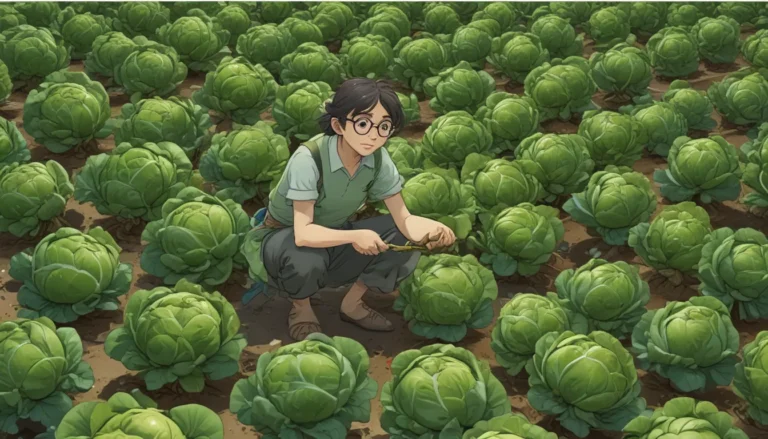Protect Your Basil: Identifying and Addressing Common Causes of Holes in Basil Leaves

Ah, basil! The vibrant, aromatic herb that adds a burst of flavor to countless dishes. From pho to pesto, bruschetta to mojitos, the possibilities are endless when it comes to incorporating basil into your culinary creations. However, as much as we love basil, we are not alone. Pests also have a fondness for this beloved herb, leading to unsightly holes in basil leaves that can ultimately harm the plant.
In this comprehensive guide, we will delve into the top five causes of holes in basil leaves and provide you with invaluable tips on how to identify and address these issues to keep your basil plants healthy and thriving.
1. Cercospora Leaf Spot: A Fungal Foe
Cercospora leaf spot, caused by fungi in the Cercospora genus, results in dark spots on basil foliage with tan centers. As the disease progresses, these spots may develop into holes with dark margins, primarily affecting older leaves first. To combat Cercospora leaf spot, implement proper watering techniques by watering at the soil level and providing adequate spacing between plants. If your basil is infected, consider using copper fungicide to eliminate the fungus.
- Tips to Combat Cercospora Leaf Spot:
- Water at the soil level to prevent spread.
- Provide adequate spacing between plants.
- Consider using copper fungicide for treatment.
2. Grasshoppers: Not So Garden-Friendly
Grasshoppers, with their voracious appetite and powerful mandibles, can wreak havoc on basil plants by creating angular, jagged holes in the foliage. While handpicking grasshoppers and drowning them in soapy water can be an effective control method, using baits or insecticides containing spinosad may be necessary during severe infestations.
- Tips to Combat Grasshoppers:
- Handpick and drown grasshoppers in soapy water.
- Use baits or insecticides containing spinosad for severe infestations.
3. Japanese Beetles: Pretty But Destructive
Japanese beetles, with their striking appearance and insatiable appetite, can decimate basil leaves by creating small holes in the center of the foliage. These pests can skeletonize basil plants and attract more beetles with their pheromones. Various control methods, such as encouraging natural predators or using soap sprays, can help manage Japanese beetle populations.
- Tips to Combat Japanese Beetles:
- Encourage natural predators.
- Utilize soap sprays for control.
4. Owlet Moths: Larval Nuisances
Owlet moths, specifically their larvae known as cutworms and armyworms, can cause significant damage to basil plants by feeding on the foliage. While cutworms typically cut off plants at the base, armyworms leave ragged holes or consume entire plants. Methods such as handpicking larvae or using products containing Bacillus thuringiensis (Btk) can help control owlet moth infestations.
- Tips to Combat Owlet Moths:
- Handpick larvae at night.
- Use products containing Bacillus thuringiensis (Btk) for control.
5. Slugs and Snails: Slimy Pests
Slugs and snails, notorious garden nuisances, can leave behind large, ragged holes in basil leaves. These herbaceous plant predators can be managed by implementing strategies to reduce their populations and limit the damage they cause in your garden.
- Tips to Combat Slugs and Snails:
- Implement strategies to reduce slug and snail populations.
- Consider using natural predators or barriers to protect basil plants.
Conclusion: Safeguarding Your Basil Plants
When it comes to growing basil, encountering issues such as holes in foliage is a common occurrence. By identifying the potential causes of these holes and taking proactive measures to address them, you can safeguard your basil plants and ensure their continued vitality.
- Stay Vigilant: Regularly inspect your basil plants for signs of pest infestations or fungal diseases.
- Implement Control Measures: Utilize natural and organic methods to manage pest populations and protect your basil plants.
- Seek Help: If you encounter challenges beyond your expertise, seek guidance from gardening resources or professionals to address the issue effectively.
By following these guidelines and staying attentive to your basil plants’ needs, you can enjoy a bountiful harvest of fresh, healthy basil throughout the growing season.
What challenges are you facing with your basil plants? How are you addressing them? Share your experiences and tips in the comments below. For more insights on growing basil and preserving your harvest, explore our informative guides:
- Propagating Basil: A Step-by-Step Guide
- Growing Spicy Globe Basil: Tips and Techniques
- Planting and Cultivating ‘Dark Opal’ Basil: A Comprehensive Overview
Remember, a healthy basil plant yields a flavorful harvest. Take the necessary steps to protect your basil and savor the joys of homegrown herbs in your culinary creations.
Disclaimer: This article is intended for informational purposes only. Always consult with gardening experts or professionals for personalized advice on plant care and pest management. All rights reserved. Refer to our Terms of Service for more information. Product images courtesy of Arbico Organics, unless otherwise noted.





